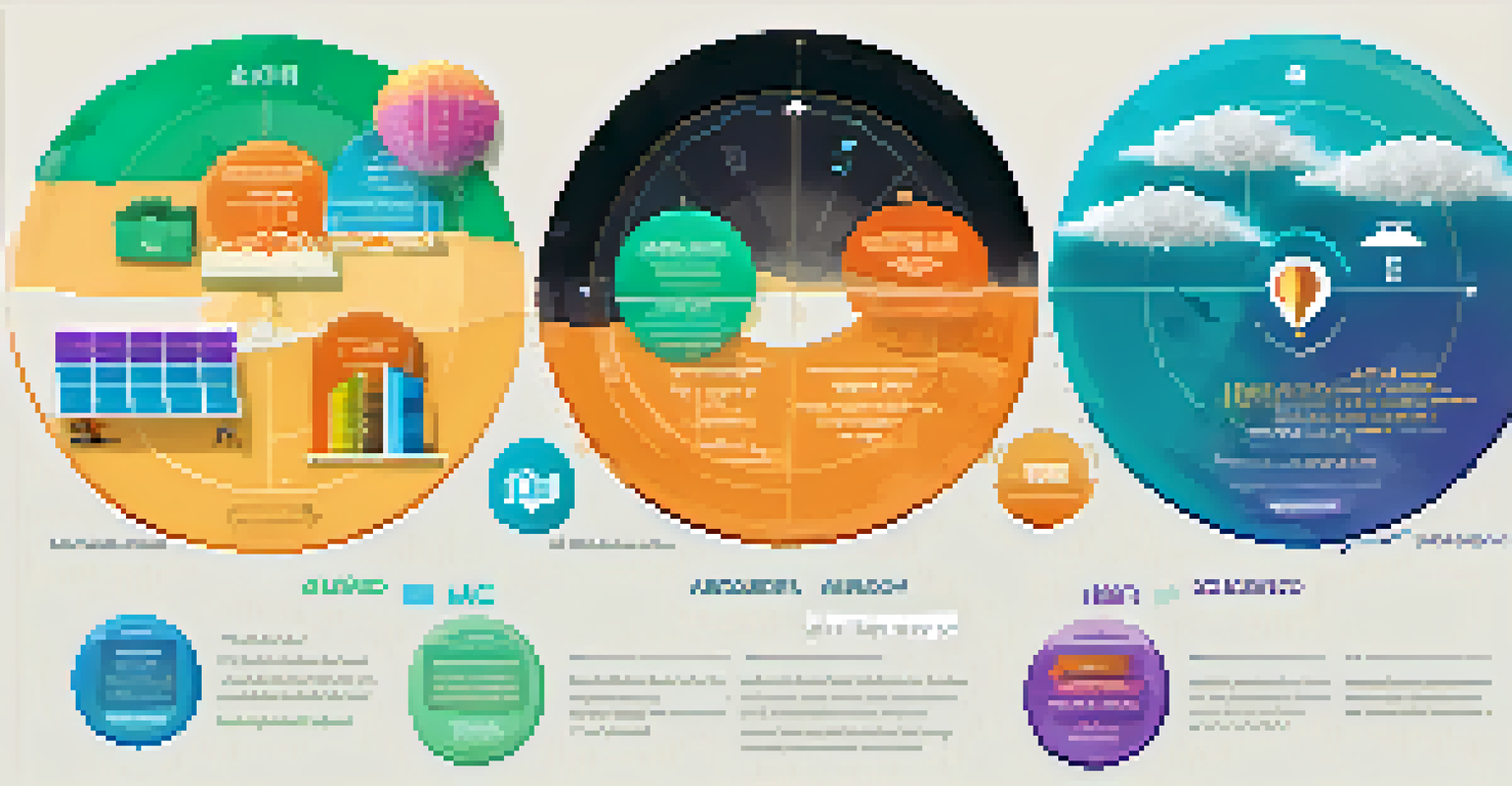Comparing Airdrops vs. ICOs: Which is More Effective?

Understanding Airdrops: What Are They?
Airdrops are a marketing strategy used by cryptocurrency projects to distribute free tokens to potential users. Often, these tokens are given away to promote awareness and create a buzz around the project. It can be likened to a brand giving out free samples to entice customers into trying their product.
Airdrops are a great way to create a buzz around a project and engage potential users.
Typically, users may need to complete certain tasks, like following social media accounts or joining a community, to qualify for these free tokens. This not only helps the project grow its user base but also fosters a sense of community among early adopters. It's a win-win situation, where users get free assets and projects gain visibility.
However, while airdrops can be a great way to engage users, they also come with risks. Recipients might not have any genuine interest in the project, leading to a sell-off of tokens immediately after receiving them, which can affect the token's value.
What Are ICOs? Definition and Purpose
Initial Coin Offerings (ICOs) are fundraising mechanisms where projects sell their tokens in exchange for capital, usually in established cryptocurrencies like Bitcoin or Ethereum. Think of them as a crowdfunding campaign tailored for the crypto world, where investors buy in early with hopes of future returns.

ICOs are typically used to raise funds for project development and marketing, allowing developers to bring their ideas to life. This can be an effective approach, as it gives projects the financial backing they need to succeed. However, it also means that investors must do their homework to assess the project's potential.
Airdrops Boost User Engagement
Airdrops are an effective way to increase user engagement by distributing free tokens to create excitement and build a community.
One of the significant risks of investing in ICOs is the possibility of fraud or project failure. Without proper regulations, some ICOs have turned out to be scams, leaving investors with worthless tokens. This uncertainty can make ICOs a gamble for many.
Comparing Goals: Airdrops vs. ICOs
The primary goal of airdrops is to increase user engagement and create a community around a new project. They aim to distribute tokens widely, making it easier for people to join and participate. Airdrops are about building a network and ensuring that users have a stake in the project.
The best ICOs are those that balance community engagement with financial backing.
On the other hand, ICOs focus on raising funds for project development. The goal is to secure capital upfront from investors willing to bet on the future success of the project. While building a community is also important, the emphasis is on financial backing rather than widespread token distribution.
This difference in objectives highlights how each method serves its purpose in the crypto ecosystem. Airdrops can create a buzz and engage users, while ICOs provide the financial resources needed for growth and development.
User Engagement: Airdrops vs. ICOs
Airdrops often lead to higher user engagement due to their free nature. By distributing tokens to potential users, projects can create excitement and draw attention to their offerings. This engagement is crucial because a connected community can help spread the word and advocate for the project.
In contrast, while ICOs can also foster engagement, it usually occurs after individuals have made a financial commitment. Investors may be more focused on returns than community involvement, which can lead to a less engaged user base. The motivation shifts from community building to profit-making.
ICOs Fund Project Development
Initial Coin Offerings (ICOs) serve as a fundraising mechanism for projects, allowing developers to secure capital for their ideas.
Ultimately, the level of engagement depends on the project's strategy and the incentives they provide. A successful project can find ways to combine both approaches, leveraging the benefits of airdrops while also securing funding through ICOs.
Risk Factors in Airdrops and ICOs
Airdrops come with their own set of risks, including the possibility of attracting users who are only interested in free tokens. This can lead to volatility in token prices and a lack of genuine support for the project. Additionally, poorly executed airdrops can damage a project's reputation.
ICOs carry significant risks primarily related to the potential for scams and project failures. Without stringent regulations, investors might find themselves losing money on projects that never deliver. Moreover, the lack of transparency can make it difficult for investors to assess the viability of an ICO.
Both methods have their pitfalls, and understanding these risks is essential for anyone involved in the crypto space. By being aware of the potential downsides, users and investors can make more informed decisions.
Regulatory Landscape: Airdrops vs. ICOs
The regulatory environment for airdrops is still evolving, with many jurisdictions lacking clear guidelines. While airdrops are generally seen as less risky, they still face scrutiny, especially if they are tied to the potential for profit. This uncertainty can impact how projects choose to implement airdrop strategies.
ICOs, on the other hand, have faced significant regulatory challenges globally. Many governments have issued warnings or outright bans on ICOs due to concerns about fraud and investor protection. This has led to a more cautious approach among projects considering this fundraising method.
Risks in Crypto Strategies
Both airdrops and ICOs carry inherent risks, such as attracting uninterested users or potential fraud, making awareness essential for participants.
As regulations continue to develop, the landscape for both airdrops and ICOs will likely change. Staying informed about these regulations is crucial for anyone looking to participate in the crypto market, whether through receiving tokens or investing in projects.
Conclusion: Airdrops or ICOs – Which Is Better?
Ultimately, whether airdrops or ICOs are more effective depends on the project's specific goals and target audience. If the aim is to build a community and generate excitement, airdrops may be the way to go. However, if the goal is to secure funding for development, an ICO might be more suitable.
It's also worth noting that many successful projects utilize a combination of both strategies. By engaging users through airdrops while also conducting an ICO for funding, they can create a comprehensive approach that maximizes their chances of success.

In the end, understanding the strengths and weaknesses of each method will empower users and investors to make choices that align with their interests and risk tolerance in the ever-evolving world of cryptocurrency.